
Samsung’s Galaxy S25 Ultra is a brilliant flagship from top to bottom, just as long as you can handle its size. It oozes power and prestige from the four cameras to the S Pen to the titanium frame, and it’s set up to receive software updates through the beginning of the next decade, making it a little bit easier to justify the cost. That said, this is the definition of Samsung playing it safe, and with very little new to get excited about, the more reasonably priced flagships from both Google and OnePlus are starting to loom very large.
You know that feeling when something comes out and you know that you should love it? Like when your favorite author drops a new title out of nowhere, even if it’s not their typical genre, or your favorite football team signs a promising but injury-prone young player? On paper, you know that there’s a ton of potential there, and your hopes should be sky-high. In reality, though, the experience isn’t always what it’s made out to be.
For me, that’s what has happened with the Samsung Galaxy S25 Ultra after testing it for a couple of weeks. Even though I know I should be impressed by its new slate of Galaxy AI features, overclocked chipset, and flexible cameras, I can’t help but think that Samsung’s most expensive candy bar flagship falls a little flat. Here’s why I feel somewhat let down — but why you might feel differently.
The Galaxy S25 Ultra’s design is functional rather than fun
Nobody ever said that Samsung’s massive, productivity-minded Galaxy S25 Ultra had to be the sleekest device around — nor did I expect it to be. I spent enough time with its predecessor, the Galaxy S24 Ultra, to know that there are only so many ways you can combine four cameras and an S Pen and still have room for a massive 5,000mAh battery. And yet, I remained hopeful that Samsung would at least find a way to keep its absolute beast of a flagship somewhat comfortable to use. Unfortunately, that’s not so much the case for me.
Now, I didn’t expect it to fit perfectly in the palm of my hand — I’m a small guy, and this is not a small phone. Huge phones don’t work for me because I struggle to reach across a 6.7-inch (or larger) display, and I don’t love when a device doesn’t fit comfortably in my pocket. However, I’m happy to make exceptions when phones feel well-designed, like the just-round-enough OnePlus 13 or the Google Pixel 9 Pro XL with a slightly softer aluminum frame. The problem, for me, is that the Galaxy S25 Ultra is neither of those things.
Instead, someone at Samsung decided to merge the design of its largest flagship with that of its smallest. So, off went the rounded frame that made the Galaxy S24 Ultra manageable to hold, and in its place sits a flat, industrial slice of titanium that meets the front and rear glass at sharp right angles. It’s almost identical to the frame on both the Galaxy S25 and the Galaxy S25 Plus, with an additional rear camera and an S Pen tucked along the bottom edge. For me and my small hands, though, the result is a phone that feels too big and blocky to be held comfortably. I need to use two hands with the Galaxy S25 Ultra at almost all times, and that’s without even touching the S Pen.
Of course, I know why Samsung made the changes it did. I know that it’s better to have a series of flagships that all match and that the Ultra was always going to feel big to have enough space for its additional camera and stylus — that’s just the way it is. I know that adopting tougher glass for the front and back panels is a substantial upgrade, especially if you want to live that caseless lifestyle — but please, as a guy who has had to repair a phone or two in his day, don’t trust glass or titanium over concrete.
Also, if you’re after a new phone that’s simply gorgeous to sit and look at, I’d recommend you keep moving. My colleague C. Scott Brown recently put together a list of the best-looking phones ever made, and to me, the Galaxy S25 Ultra deserves to be as far away from that list as possible. It’s taken on a generic profile to the point where there’s almost no personality left. The cameras sit in their own little islands once again, and the sharp frame makes the front and back panels of glass feel like they’re so far apart.
Samsung’s choice of materials is excellent, but I wish it hadn’t made the Galaxy S25 Ultra less comfortable to hold.
While I have no real love for the size or shape of the Galaxy S25 Ultra, I can’t fault Samsung’s materials. Both the grade-five titanium frame and Corning Gorilla Armor 2 on the front and back feel like they could take a beating, whether you drop the phone on the sidewalk or let it take a tumble across your kitchen floor. I probably wouldn’t recommend either one — it’s a $1,300 phone, after all — but I’m a little more confident carrying this Ultra without a case than I usually am. Besides, if I put a case on it, I won’t be able to appreciate the satin finish that continues to be one of my favorites long after Samsung has given up on the Phantom branding. This year, my color of choice is a shade called Titanium Silverblue, which feels like a silly combination of three slightly different colors, yet it’s spot-on in describing the pale blue finish.
Of course, Samsung knows you’re not about to buy the Galaxy S25 Ultra for its refreshed design. You might not even buy it for the S Pen — especially now that it comes without Bluetooth. But, what you should consider buying the Galaxy S25 Ultra for is its display, which is simply excellent. Of course it is — Samsung had to save something for its top-end launch. I’d go so far as to say that I love the Galaxy S25 Ultra’s display, I just wish it were in a phone that’s easier to wrangle, almost like it should fold in half for more comfortable carrying… call it a Galaxy Flip or something.

Ryan Haines / Android Authority
Anyway, I’ve yet to find an area where the 6.9-inch Dynamic 2X AMOLED panel struggles, from helping me keep up with Chelsea FC’s not-a-title-race to exploring the new set of Space-Time Showdown cards in Pokemon TCG Pocket. The truly variable 1-120Hz refresh rate is buttery smooth, whether I’m digging through a 38-hour Spotify playlist (not a joke) or trying to recap an entire week of Champion’s League football at double speed (also, not a joke). Samsung’s 2,600 nits of peak brightness might not quite match the 3,000 nits of the Pixel 9 Pro XL or the 4,500 nits of the OnePlus 13, but let’s be honest — you’re not going to notice a difference. I certainly didn’t, whether I was navigating to drop a friend off at a metro station or doomscrolling before bed.
My last two points on the design of the Galaxy S25 Ultra are a little bit disappointing, but neither one is shocking. First, there is no full Qi2 support on Samsung’s top-end flagship. Technically, the entire series is Qi2 Ready, which means it can work with magnetic accessories, but you’ll need a specific magnetic case to add the functionality. Those magnets could also interfere with the S Pen, which is only made worse because it can’t be used as a remote camera shutter anymore, either. Also, the Galaxy S25 Ultra is IP68 rated, which is still great, but we’ve started to see much more affordable devices launch with IP69 protection from jets of water and heat. It would be nice to see Samsung do the same when there aren’t too many other changes in store.
Qualcomm’s overclocked Galaxy-exclusive chipset remains excellent
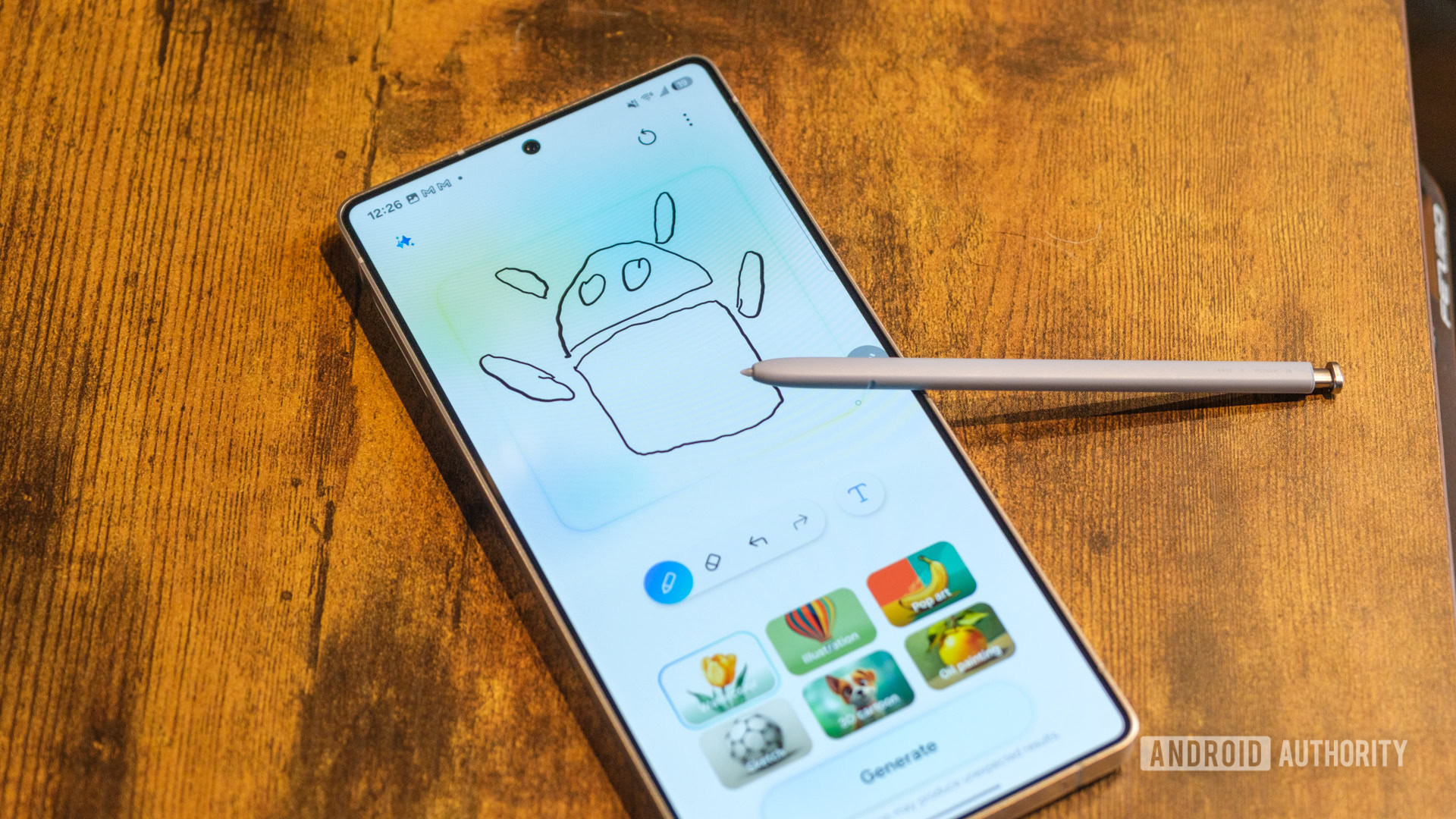
Ryan Haines / Android Authority
Although Samsung’s current hardware design falls incredibly flat for me, I can’t argue with anything going on under the hood of the Galaxy S25 Ultra. It’s tough to pack an overclocked Snapdragon 8 Elite chipset with 12GB of RAM and up to 1TB of fixed storage and not perform like an absolute winner. Of course, you never know — I’ve gone into reviews with high hopes, only to discover that a flagship can’t keep up with its own thermal demands.
But the Galaxy S25 Ultra is not one of those flagships — this is a performer through and through based on our comparative benchmarks. As always, I loaded up our usual slate of CPU and GPU-intensive tests and put Samsung’s numbers up against the best from Apple, Google, and OnePlus, taking on the top in-house processors and the standard version of Qualcomm’s best chip at the same time.

Ryan Haines / Android Authority
As expected, Samsung’s Galaxy S25 Ultra came ready to compete across all our tests. It didn’t dominate the competition outright, falling short of the iPhone 16 Pro in single-core Geekbench performance and landing behind the OnePlus 13 across 20 runs of 3DMark’s Wild Life test, but it checked every other box I asked of it along the way. It put up the highest PCMark score I’ve ever seen, suggesting a better balance across various day-to-day tasks than its closest Android rivals.
I’m also slightly surprised to see how quickly the massive Galaxy S25 Ultra fell behind the OnePlus 13 in terms of GPU performance, though it remains comfortably ahead of competitors from Apple and Google. There’s a good chance that’s precisely where Samsung wants to be — it seems to treat the iPhone and Pixel as its main threats — but I’m not sure that’s the safest plan. To me, the OnePlus 13 is the best phone I’ve used in a long time, and for Samsung to seemingly rule it out feels like a dangerous game.
Luckily for Samsung, though, benchmarking never tells the whole story. Outside of occasionally being bettered on paper, the Galaxy S25 Ultra is a beast in daily life. As mentioned above, it’s guided me comfortably through my winter of activities, from dropping friends at grad school visits to navigating me to the Apple Store when I needed to repair a device. It’s been somewhat challenging to adopt the Galaxy S25 Ultra as my daily driver, given its massive size, yet I’ve come back to it without fear any time streaming has been involved. It answered my call when I needed some post-hangover Super Bowl highlights, and it will continue to guide me when I have to find my way to the SEPTA station in Wilmington, Delaware, for the victory parade on Valentine’s Day. Samsung’s cooling setup is also strong enough to avoid the kind of overheating issues we saw with some of the earliest Snapdragon 8 Elite handsets.
It’s tough to doubt a ‘For Galaxy’ chipset when Qualcomm comes up big time and time again.
With Samsung’s ever-reliable 5,000mAh battery under the hood, I’m not too worried about how the Galaxy S25 Ultra will handle a long day spanning three states. It’s a beefy cell that doesn’t seem to slow down very quickly, and I’ve regularly been able to push it for two days away from a charger before I’m worried about turning on power-saving mode. Also, this is usually where I’d insert the results of our standardized battery drain test, which puts a phone through a gauntlet of everyday tasks like web browsing, video streaming, and camera capturing. Unfortunately, Samsung’s top-level optimization has somewhat broken our test for now, with the Galaxy S25 Ultra preferring to save its juice rather than shift from one leg of the test to the next.
So, instead, you’ll get my thoughts on the battery performance on an average day. In short, it’s excellent. Although I’m not pulling the Galaxy S25 Ultra out of my pocket and checking it quite as often as other phones when it’s out, I tend to use it for longer stretches at a time. I’ll start by checking a sports score or two from the Now Bar, only to find myself hopping from a video podcast on Spotify to checking off a few levels in Royal Match before I go back to check on the status of my pack stamina in Pokemon TCG Pocket. I’ll occasionally spend a bit longer exploring some of the new Galaxy AI features, too, but we’ll come back to those in a second.

Ryan Haines / Android Authority
Anyway, when you knock out the Galaxy S25 Ultra’s massive cell, you’ll tap into a charging experience that feels all too familiar. For what feels like the fifth year in a row, Samsung is sticking with 45W wired and 15W wireless charging for its most expensive flagship. Don’t get me wrong, 45W wired speeds are pretty good — as long as you have the required USB PD PPS charger — but they no longer feel revolutionary or especially impressive. Motorola has surpassed Samsung with 68W speeds on its top Edges and Razrs, and OnePlus is even faster with 80W wired charging on the OnePlus 13.
As seen above, Samsung still has Apple and Google in a charging chokehold. Although Google updated its most premium Pixel 9 Pro XL with 37W wired speeds, it still demands an additional 20 minutes on the block before it’s ready to get back in action. The iPhone 16 Pro is even worse, nearly doubling the Galaxy S25 Ultra’s charging time despite having the smallest battery of the current flagship crop.
Of course, digging into Samsung’s charging setup gives me another chance to bemoan its lack of proper Qi2 support. It’s been two years since the Wireless Power Consortium launched its Apple-supported take on MagSafe, and I thought we’d have native support by now. Instead, you have to buy a specific case for use with your already expensive phone, and adding magnets to the Galaxy S25 Ultra ultimately strips out one of its most unique features, the S Pen. It’s a bit of a silly limitation on an extremely expensive device that otherwise delivers on just about every front.
Is Samsung still a camera king?
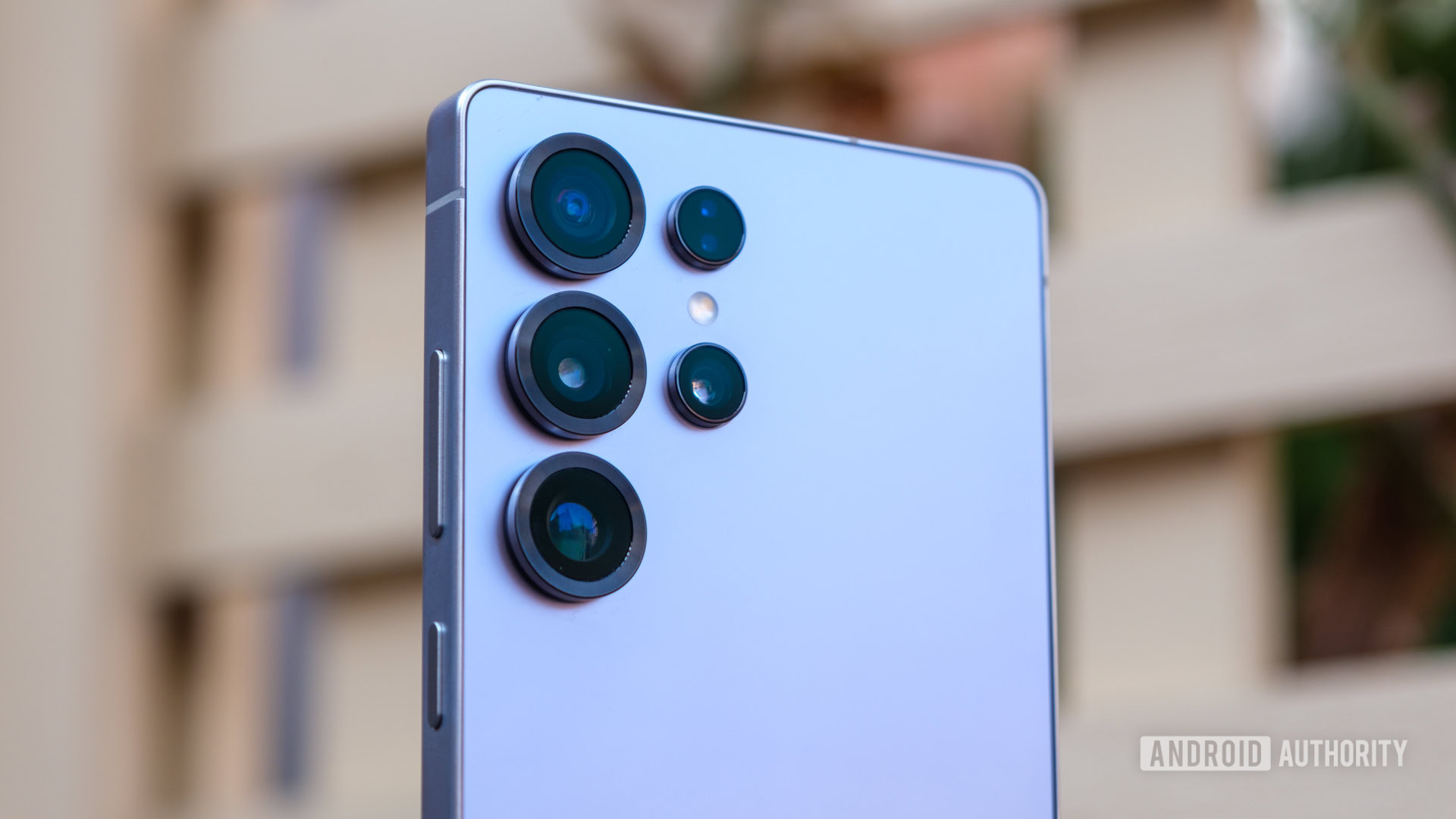
Ryan Haines / Android Authority
Sticking with another typical Samsung strength, it’s time to discuss the Galaxy S25 Ultra’s cameras. Most years, Samsung launches its new slate of flagships, and they slot comfortably onto our podium for the best Android camera phones that money can buy. Sometimes, Samsung even adds an exciting new wrinkle or two or at least a few megapixels to one of its sensors. This year, we got the latter.
At a glance, the four sensors that dot the rear panel of Gorilla Armor 2 look almost identical to those that came before. They still live in their individual rings, though those rings are slightly more robust this time around. And, in three out of four cases, they’re identical to the previous generation. Samsung carried over the same primary and telephoto hardware from the Galaxy S25 Ultra, keeping a 200MP sensor as the star of the show and backing it with 10MP and 50MP lenses set to 3x and 5x optical zoom, respectively. The one difference, however, comes in the ultrawide sensor, which has jumped from 12MP to 50MP and expanded its maximum aperture from ƒ/2.2 to ƒ/1.9 to capture more light and offer a shallower depth of field. So, with that basic hardware rundown complete, let’s check out some camera samples. Also, please forgive the general lack of color — winter in Baltimore is a difficult time to escape red bricks and gray skies, what can I say?
Despite the overall sameness of the colors across most of my samples — thanks, default Samsung profile — I feel like the variety of zoom lengths and shooting modes offers a decent feel for the Galaxy S25 Ultra’s potential. While I think some of Samsung’s punchier colors, like the orange of the glass bottles and the green of the Pitango Bakery sign, might thrive better in the spring and summer months, the sharpness in both photos is still excellent. I was especially impressed with the detail of the glass bottles as I was using Samsung’s digital macro mode, which relies on the upgraded ultrawide sensor. It pulled solid detail out of the bottles themselves and the cement base in which they’re encased without falling into the fuzzy macro trap some ultrawide cameras suffer from.
Also, while I’m mostly unimpressed with Samsung’s camera filters (as I’ll discuss in a minute), I quite like the results of my custom filter when applied to the holly bush. It gives the berries a much warmer punch than reality, and the warmer colors are almost enough to make up for the snow I had to trudge through to find colorful plant life. I can’t give Samsung too much credit for that filter, though, since it’s based on an image I took with my Fujifilm X100V and then ran through Samsung’s camera app.
By the way, if you’ve read a recent Samsung Galaxy review, you probably remember us pointing out issues with motion blur, especially when snapping photos of pets. Well, I’m happy to say that those issues have been largely cleaned up, at least in well-lit scenes. I’ve been impressed with a few of the shots I’ve captured of my friends’ dogs running around my neighborhood park and had decent luck catching moving players at the Eagles’ Super Bowl parade, both in bright daylight. Unfortunately, low-light scenes still throw a little bit of a wrench into the motion blur, as the slower shutter speed makes my tuxedo cats look like even more of a black-and-white blur than they already are.
However, the spot where Samsung surprised me most was when I put it through its zoom paces. After all, Samsung has been bragging about hitting 100x on its Ultra-tier flagships for years, so you’d expect the results to be pretty good. Well, I think they can be decent, but there’s a limit to what Samsung’s sensors can resolve with help from Galaxy AI. I reached out to shoot across Baltimore’s harbor to capture the cranes that work day and night at the sugar factory and found myself decently pleased until I hit 30x zoom. Up to that point, the details looked fine, and the overall colors were good — if a bit dark against the very bright sky — and then I punched in to 100x zoom and got… something that looks like it was rendered in the Nintendo 64 classic Goldeneye. Sure, you can make out the lines and shapes of the crane, but they look more like a low-poly render than an image taken with a $1,300 smartphone.
Flipping the camera around, Samsung’s approach to selfies should be a good reminder that more isn’t always better. I’ve been far more impressed with the front-facing camera on the Galaxy S Ultra models ever since it ditched the 40MP sensor in favor of a 12MP version, picking up bigger pixels and ditching the need to bin along the way. I trust both Samsung’s color science and edge detection in portrait mode, though I might like a slightly wider field of view for the wide selfies since it only really adds enough space if someone is standing right over my shoulder.
While I’d say that, on the whole, the Galaxy S25 Ultra’s cameras are pretty good (at least up to 30x zoom), I think that Samsung is relying on software upgrades more than ever. Because the sensors themselves aren’t drastically different, I found myself digging into smaller features to find something worth getting excited about. In doing so, I spent a decent amount of time with Samsung’s new set of camera filters, which are specifically designed to challenge Apple’s Photographic Styles, and I also gave Samsung’s Audio Eraser a shot, which is a Galaxy-flavored version of Google’s Audio Magic Eraser.
Unfortunately for Samsung, both features still need a bit of fine-tuning and polish before they’re ready to take on their original inspirations. I couldn’t find enough differentiation in any of the camera filters to want to pick one over the default profile, though I do like that you can create your own based on an existing image. I also struggled to control the Audio Eraser effectively, with its Auto setting taking out too much noise and the more specific sliders often failing to separate one audio source from another. That said, Samsung will probably push updates to both features over time, so I’ll be curious to come back to them in the future.
Video shooters will also be happy to know that capturing clips on the Galaxy S25 Ultra remains excellent. You can shoot in up to 8K resolution at 30fps or 4K at up to 120fps from the rear cameras, and 4K at up to 60fps from the selfie shooter, and Samsung’s stabilization remains rock-solid. There are also a few new pro-grade wrinkles to dig into, like the ability to shoot in Log format for later color-grading or the Audio Eraser tool I mentioned above. I’ll probably skip recording in Log myself, but I’m glad to see Samsung taking on Apple’s ProRes Log support.
You can also check out full-size versions of these camera samples and many more at this Google Drive link.
One UI 7 is great, no matter how you feel about Galaxy AI
While the camera wrinkles might not have landed perfectly for me, they were far from enough to spoil the rest of my Samsung Galaxy S25 Ultra experience. Most of the new modifications to One UI 7 and updates to Galaxy AI kept me using the monster of a phone even after complaining about its overall footprint. I’d even go so far as to forgive Samsung for making us wait so long to get full access to Android 15 once the Galaxy S25 series came out — especially considering Google beat it to the punch by several months on the Pixel 9 series.
Anyway, my first hint that Samsung had spent a good long time revamping its Galaxy AI experience was when I went to test out the updated version of its Portrait Studio. See, I was less than impressed when the feature launched last year and only really preserved one human face from a photo at a time, so this year, when it got added into the Drawing Assist experience and paired with a Galaxy AI image generator, it gave me a lot more hope. The new results are significantly better than before, and they hold onto other things about your subject, like their original clothes and almost — I mean almost — a semblance of the original background. Drawing Assist struggles when it can’t find a human face, though, occasionally turning my friends into bridges or sunset scenes.
Samsung also decided to lightly copy Apple’s Dynamic Island but, like most Android developers, wanted to do Apple one better. Thus, the Now Brief and Now Bar were born. In Samsung’s case, the Now Bar is closer to a Dynamic Island-like experience, popping up in your notification bar with score updates, weather forecasts, and more bits of information throughout the day, while the Now Brief is more of a one-stop shop. It appears on your lock screen and home screen several times throughout the day, giving you an easy breakdown of the weather and your upcoming appointments. It’s largely felt impressive to me, though I can’t say I love the politically charged news articles, especially when most other briefings tune their recommendations to your interests.
Samsung’s Galaxy AI theme park is more crowded than ever, but is it worth the price to ride?
Oh, and I guess I can officially bid farewell to my friend and yours, Bixby. After automatically mapping the power button on the previous Galaxy S24 series to open the in-house assistant, that button now launches a Gemini interface, which you can use to complete tasks across apps. Unfortunately for Bixby, I couldn’t be happier. Gemini is faster and more responsive when I ask it for specific context, and I’m already more familiar with the interface after spending most of my time with a Pixel in my pocket. It became my go-to plumbing partner when I needed to fix my kitchen sink, and I’ve been counting on it to help me make plans to reach Broad Street in Philadelphia for one more Super Bowl celebration.
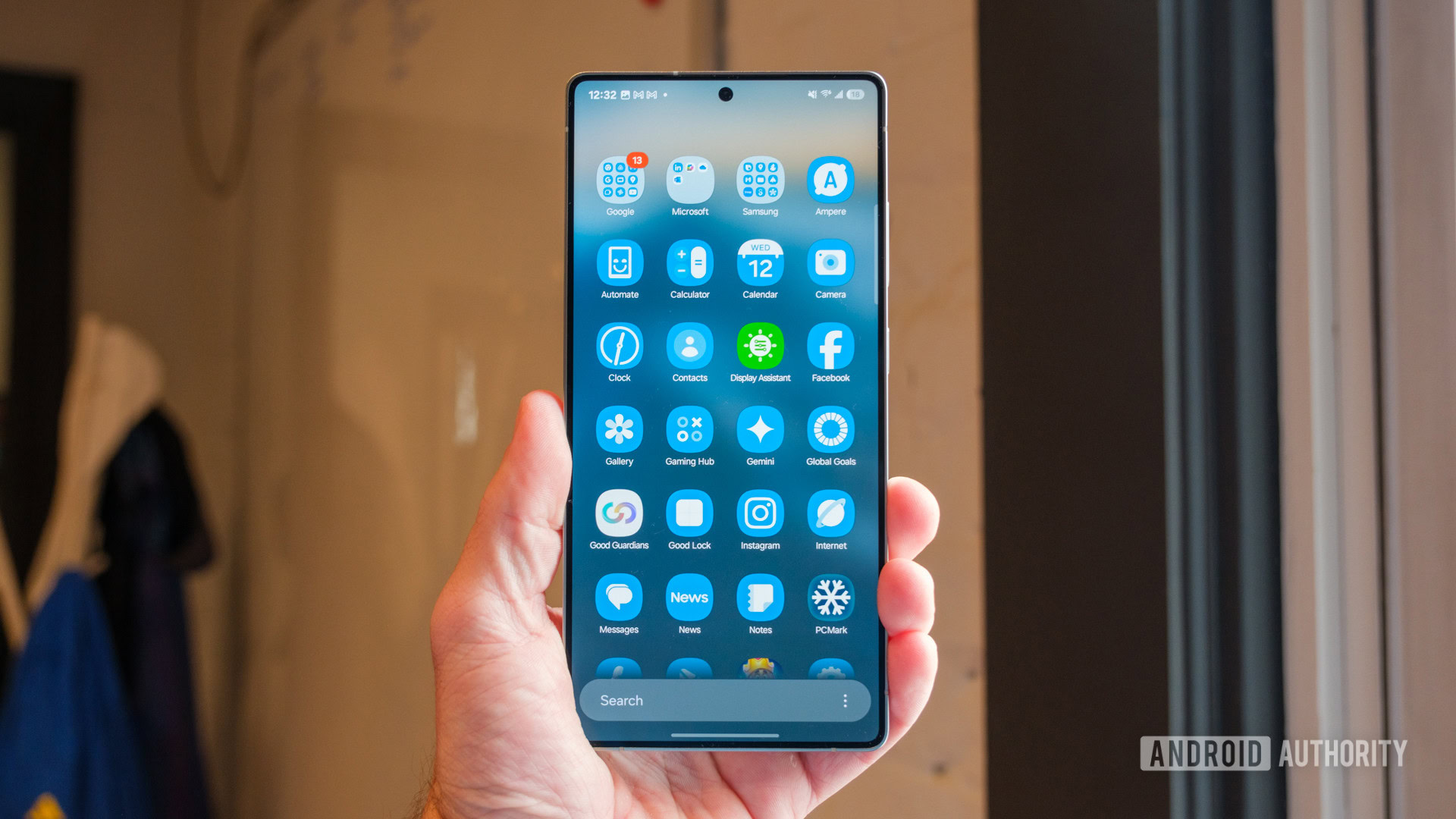
Ryan Haines / Android Authority
Of course, the rest of Samsung’s well-established Galaxy AI features are also back. Circle to Search remains really, really good, and Samsung’s Object Eraser in the Gallery app is more accurate than ever — especially when compared to the state of Apple’s Clean Up feature. I still haven’t found a love for the Writing Assist tools, but I write for a living, so that’s one piece of my job that I will defend until the end.
Outside of Galaxy AI, though, the rest of Samsung’s One UI 7 experience is just as good, if not better. The Galaxy S25 Ultra is in line for seven years of overall updates and already feels excellent, with redesigned widgets, better color-matching for app icons to your wallpapers, and redesigned default icons that look and feel a little more lively than they used to. I’m not as in love with the split of notifications into one pulldown menu and quick settings into another, but I’m slowly getting used to it after a few weeks with the phone — and I can’t find the correct setting to restore it to the previous One UI 6 layout. Also, the side-scrolling app drawer is no more; you can finally set your Galaxy S25 up with a vertical, alphabetized drawer, and it’s made my life so much easier.
Samsung Galaxy S25 Ultra review verdict: A brilliant phone that’s not for me
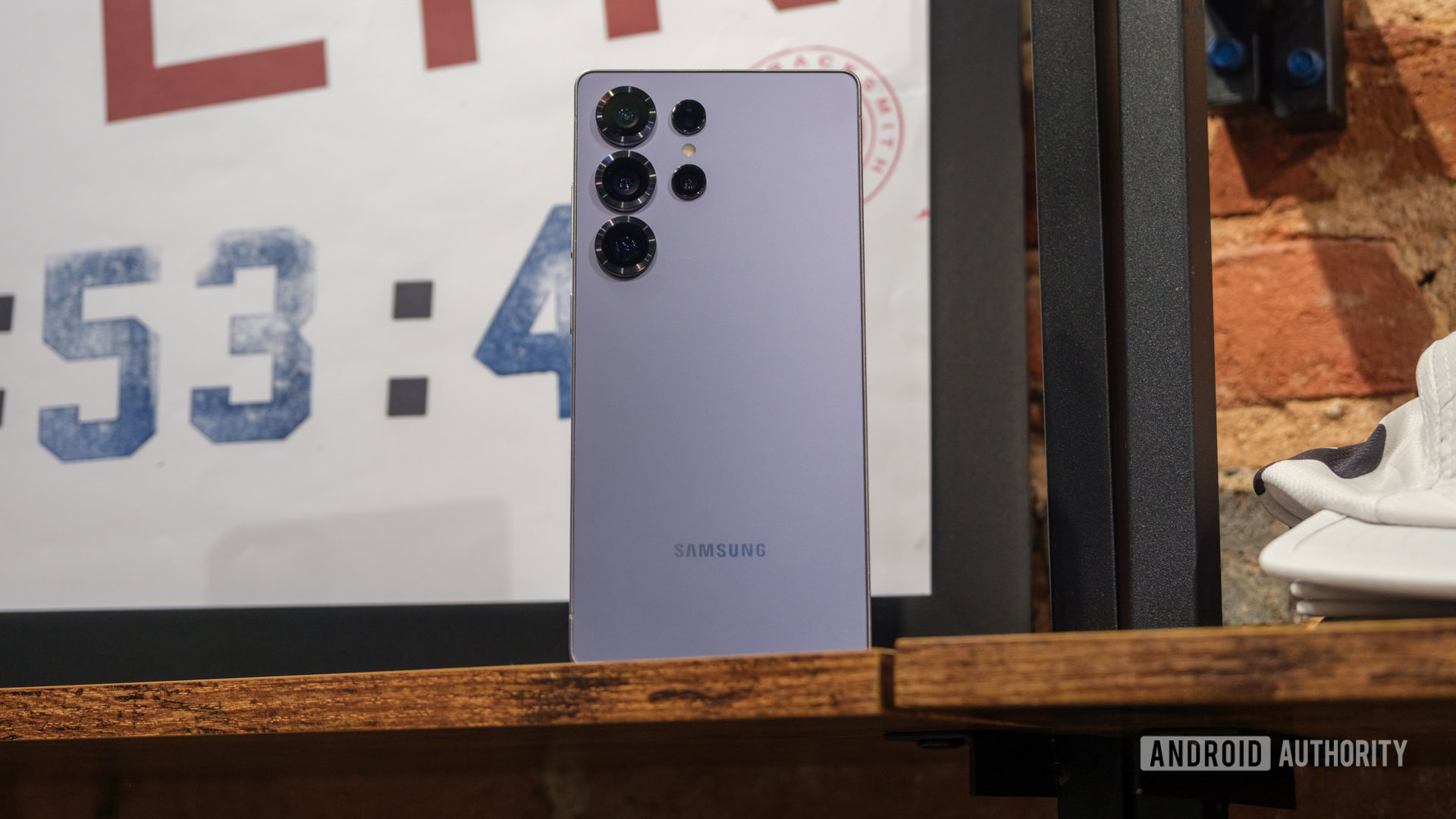
Ryan Haines / Android Authority
So, at this point, there’s little doubt left as to how I feel about the Samsung Galaxy S25 Ultra: It’s an excellent Android super-phone that packs all of the features, software support, and premium materials you could ask for, but it’s just not the phone for me. Has it impressed me at almost every turn? Yes, and it certainly deserves praise for that. It’s an objectively excellent phone that largely reminds me why Samsung isn’t all that afraid of what Google, OnePlus, or Motorola comes up with because it just has to rinse and repeat with the things that work and make them just a tiny bit better. In my eyes, though, it’s just too big for me to want to carry it every day, and after another year of minor iteration, it’s not doing enough new to convince me to look past that.
And yes, I know that’s a tough reason to knock a phone so severely that I put my SIM in something else, but it’s true. If they say that the best camera is the one you have with you, then the best phone is probably also the one that you want to carry. Unfortunately, that means carrying something smaller, even if I have to give up on a little bit of battery life or reach for cameras that don’t quite scratch 100x zoom. On the bright side, though, that also means that Samsung has at least one other phone that would fit my needs much better — and another one pretty soon that we’ve already been teased with.
I know that the Galaxy S25 Ultra is brilliant, but it’s too big for me to fall in love.
The base Galaxy S25 ($799.99 at Amazon) and the Galaxy S25 Plus ($999.99 at Amazon) deliver the bulk of the same experience, offering the same number of software updates, the same stable of Galaxy AI features, and similar overall materials while not putting nearly as much strain on your wallet. As someone who doesn’t use the S Pen hardly ever and came away not too impressed with Samsung’s 100x zoom, I would be just as happy with a phone that fits comfortably in my hand and tops out at a usable 30x zoom. That said, if you have a semi-recent Galaxy S phone, you’re almost certainly better off hanging onto it as the upgrades on offer from Samsung across the entire series are pretty meager this year — or at least wait until we have more info on the still-mysterious Galaxy S25 Edge.
Perhaps the best way to describe Samsung’s Galaxy S25 Ultra is this — it’s a big, powerful phone that doesn’t feel special enough anymore. And while Samsung may not want to admit it, its closest rivals are more competitive than ever.
Google’s Pixel 9 series might still lose in a raw power foot race, but it has been running Android 15 for months and seems determined to advance its overall design and build quality much faster than Samsung. Google also did something I’d been begging for for years and introduced a smaller Pixel 9 Pro ($999 at Amazon) that I find much more comfortable to use than the Pixel 9 Pro XL ($1099 at Amazon). I also think that Google still has an edge in terms of camera processing, with its AI-powered editing features proving just a little bit more reliable than Samsung’, plus you save a bit of cash, which is always a big factor.
There’s also Samsung’s major market competition, the iPhone 16 Pro ($999 at Amazon) and Pro Max ($1199 at Amazon). As always, Apple’s most expensive flagships feel like they’ve been tailor-made to challenge Samsung, finally jumping into the AI race and picking up new hardware buttons along the way. So far, Apple has introduced its own take on just about all of the AI features that Google and Samsung have tried, debuting Clean Up to take on the Object Eraser, Image Playground to take on the Portrait Studio, and a slate of writing tools to help clean up your messages. However, the biggest hurdle to picking up an iPhone will still be that you have to give up many of the Android comforts that brought you to Samsung in the first place and will likely have to buy a new suite of accessories — albeit with far more variety to choose from.
The S25 Ultra is the definition of Samsung playing it safe, and the more reasonably priced flagships from both Google and OnePlus are starting to loom very large.
To me, though, the real dark horse that Samsung should be worried about snatching away Android power users is the OnePlus 13 ($899.99 at OnePlus) — a phone that blew me away while reviewing it. Although the lack of official carrier availability will hurt OnePlus’s overall popularity, everything else about its latest flagship should make Samsung sweat. It bumped to an IP69 rating in addition to its IP68 protection, upgraded to even better Hasselblad-tuned cameras that are pretty impressive past 100x zoom, and picked up a slightly rounded body that’s still extremely comfortable to hold despite the massive 6.82-inch display. And again, just like Google, you’ll save yourself some cash with it thanks to the relatively massive $400 price gap.
OnePlus might still be behind the best Android phones in terms of its software update commitment, but I have to say, switching to the S25 Ultra — one of the most competent, yet safest plays we’ve seen from Samsung to date — made me long to go back to a flagship that was genuinely pushing the envelope and didn’t remotely feel like it was settling.
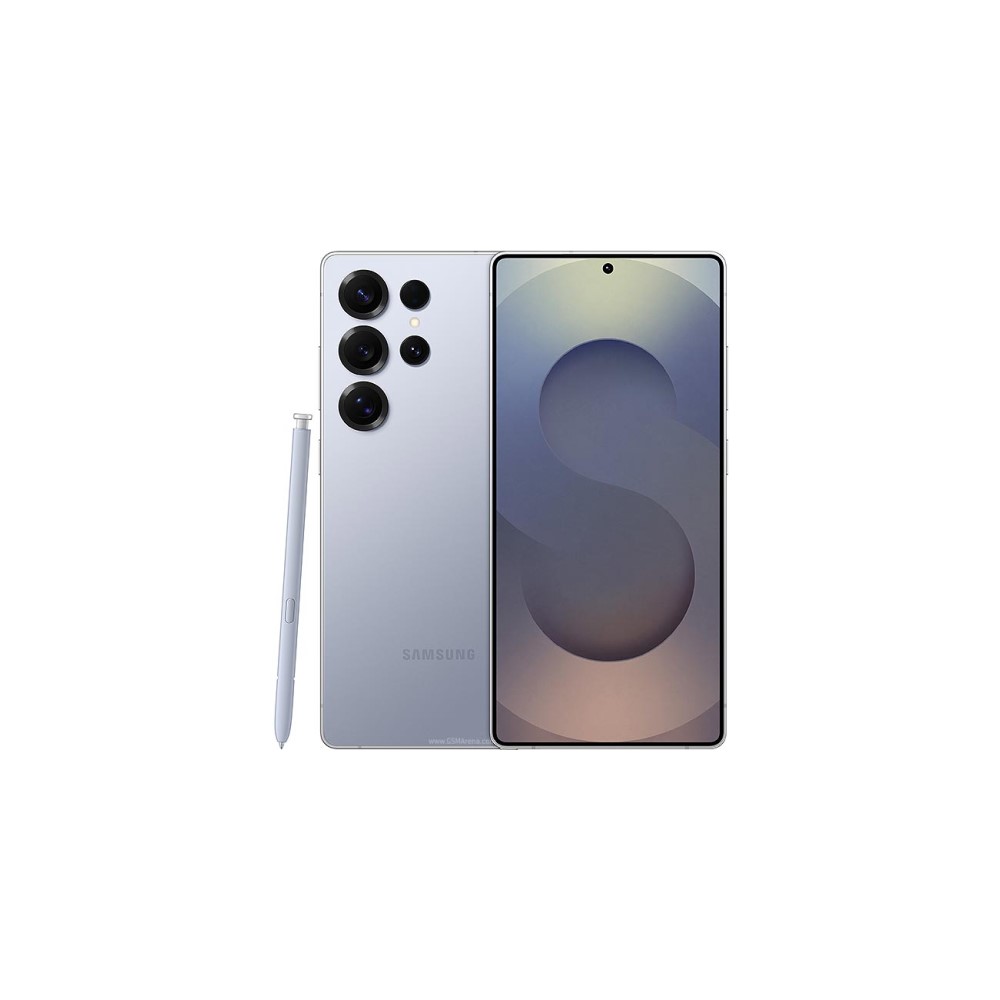

Samsung Galaxy S25 Ultra
100x zoom • Big battery • 7 years software support
MSRP: $1,299.99
Samsung’s best for 2025
Simply put, this is Samsung’s very best phone for 2025. The Samsung Galaxy S25 Ultra is a 6.9-inch QHD+ device with 12GB of RAM, 256GB+ of storage, embedded S Pen, and the overclocked Snapdragon 8 Elite SoC. The key upgrade over the lower S25 models is a 200MP main camera and 100x Space Zoom.
Positives
- Premium materials
- Great battery life
- Solid cameras
- Top-tier Snapdragon performance
- Brilliant display
- Excellent software policy
Cons
- Downgraded S Pen
- Mostly AI-based upgrades
- Still no full Qi2 support
- Can be uncomfortable to hold
- Very expensive









